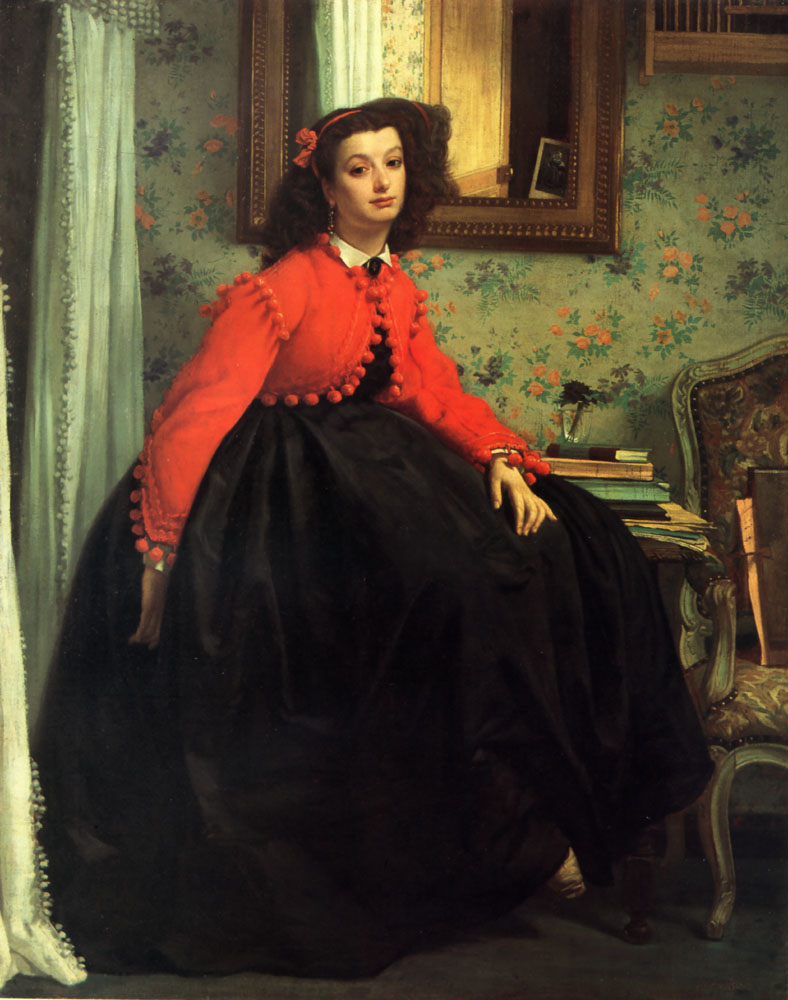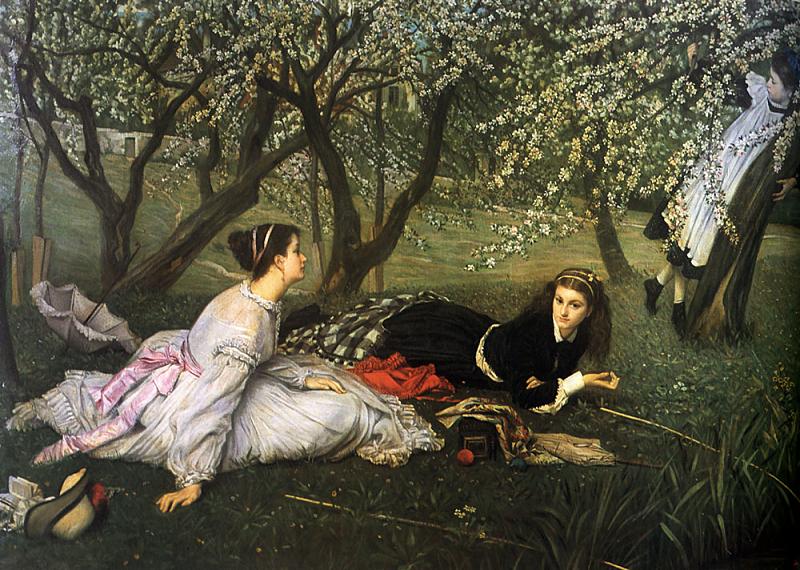
Spring, 1865
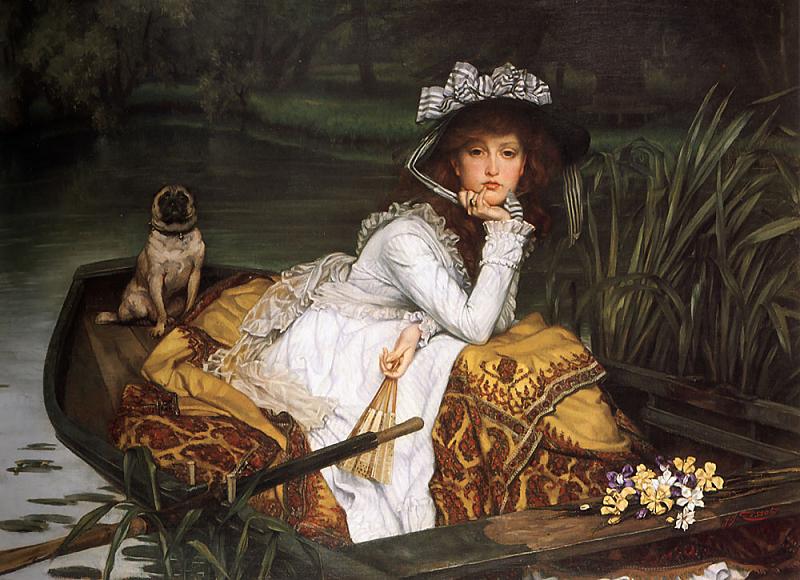
Young Lady in a Boat, 1870
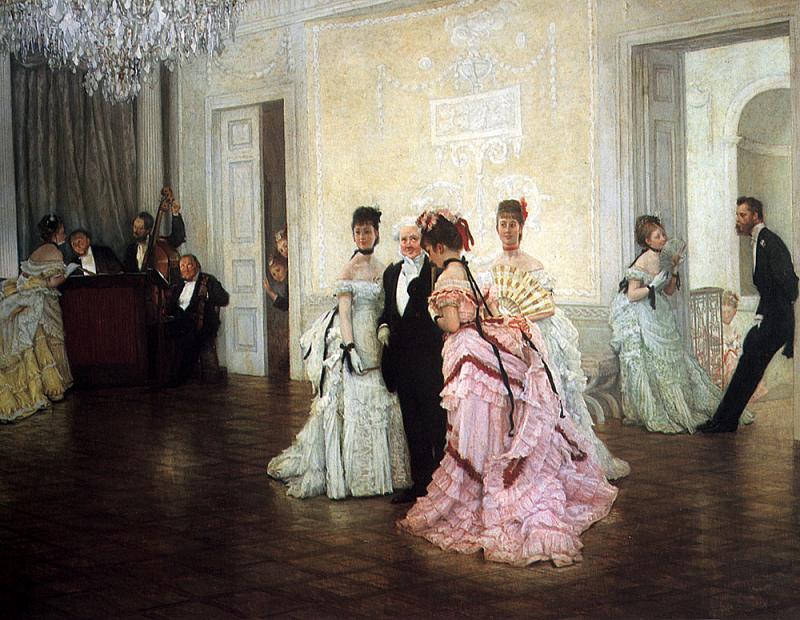
Too Early, 1873
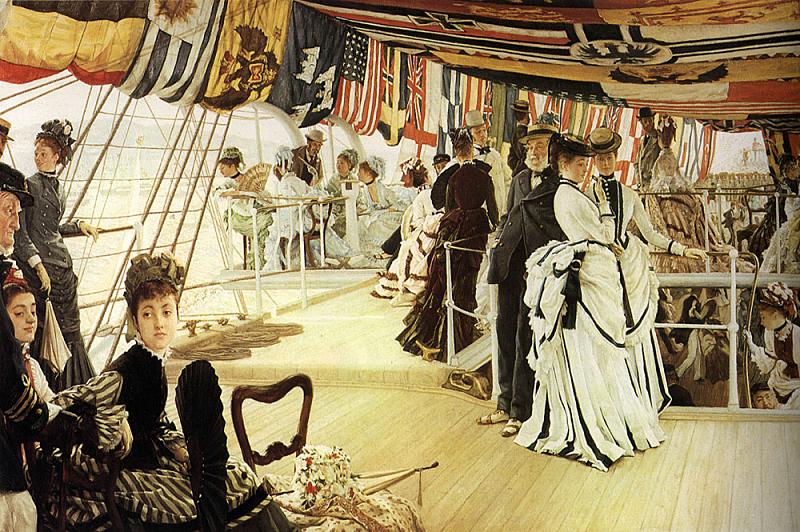
The Ball on Shipboard, c.1874
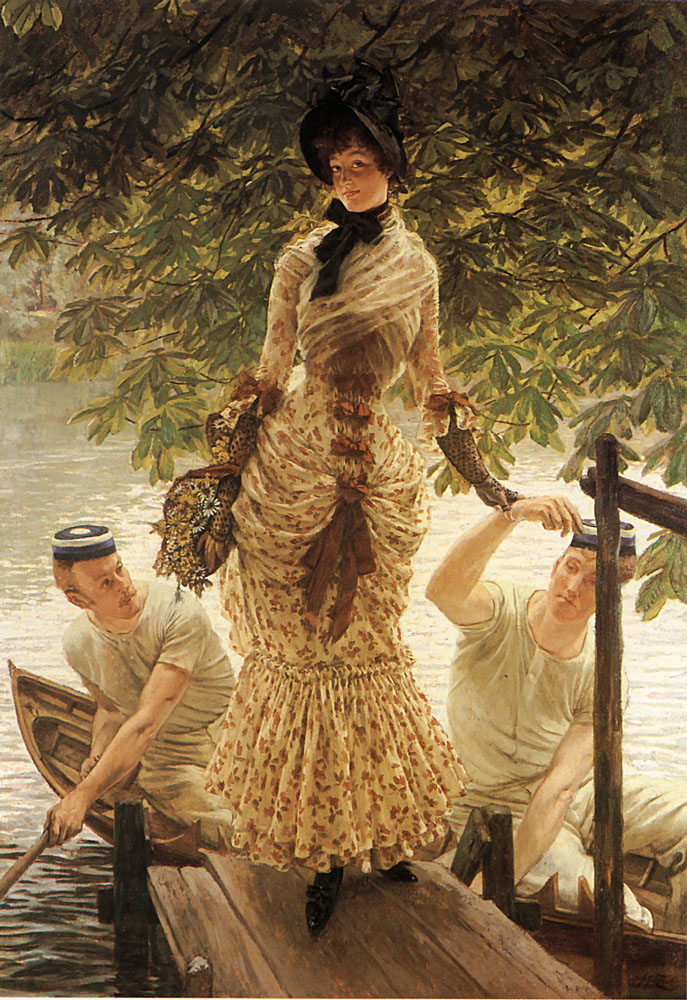
On the Thames, c.1874
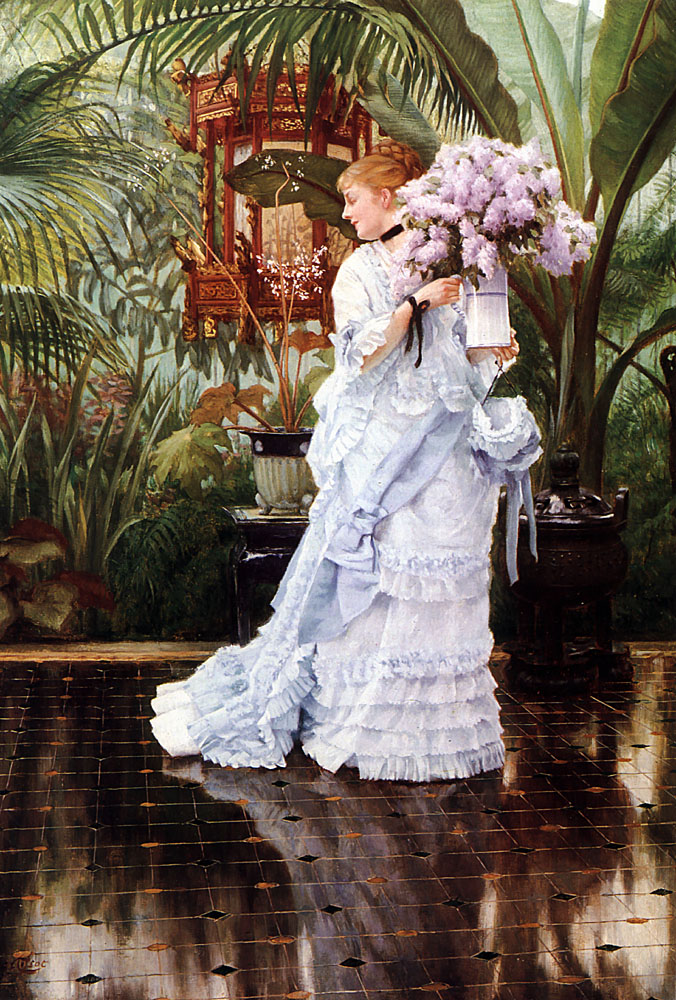
The Bunch of Lilacs, c.1875
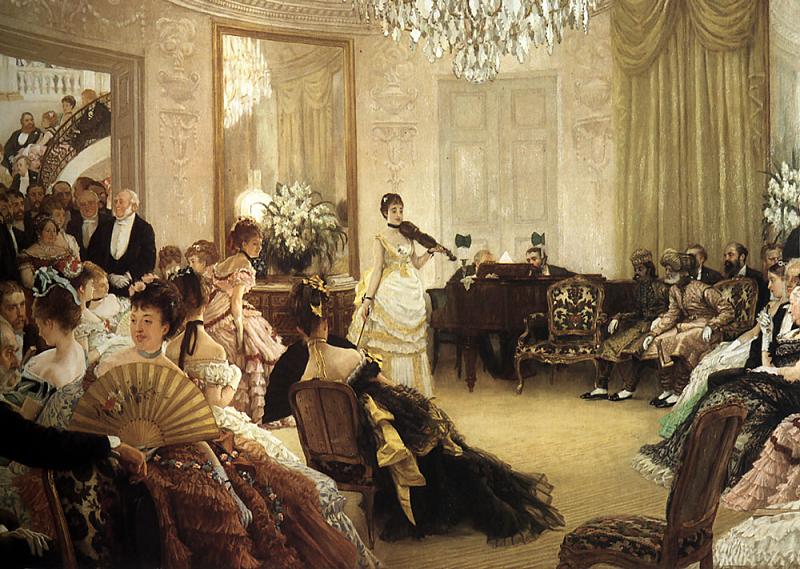
Hush!(The Concert), c.1875
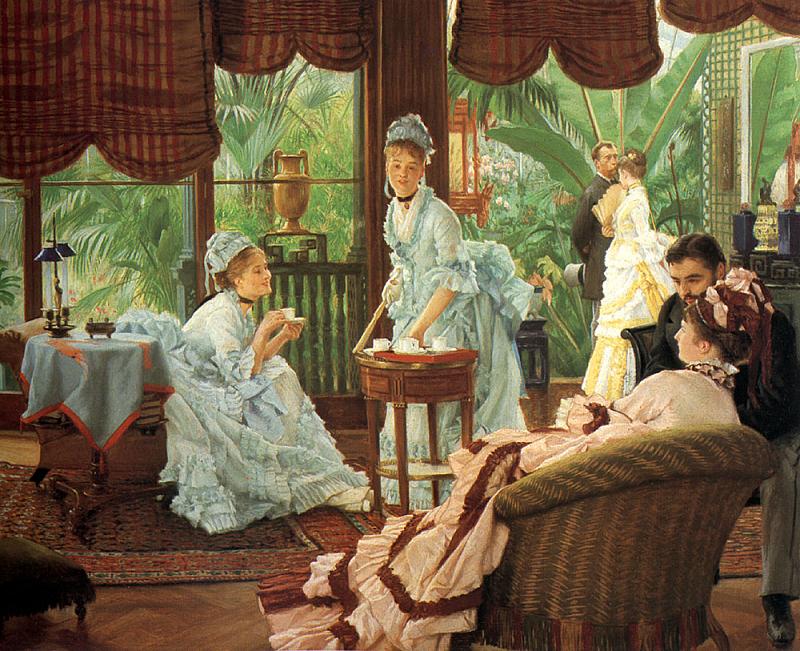
In the Conservatory(The Rivals), c.1875-1878
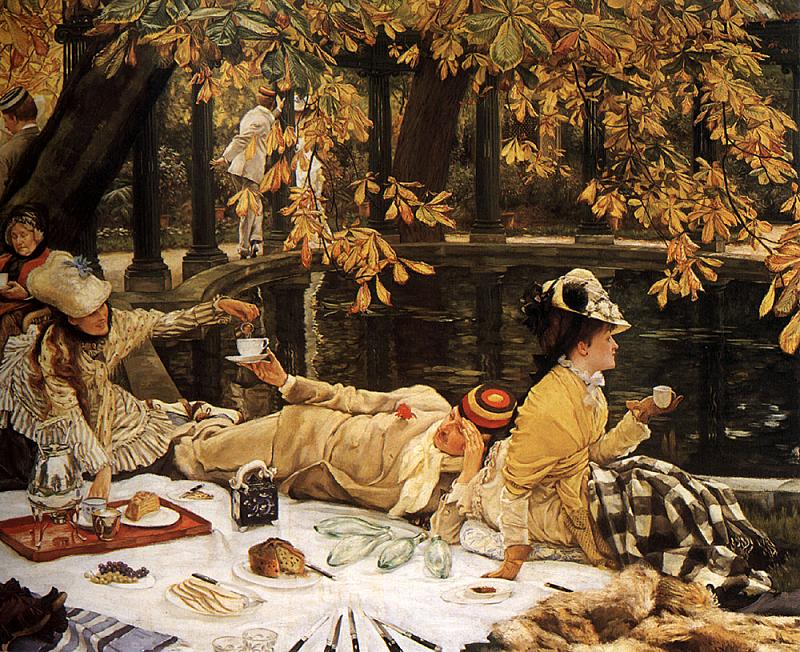
Holyday(The Picnic), c.1876
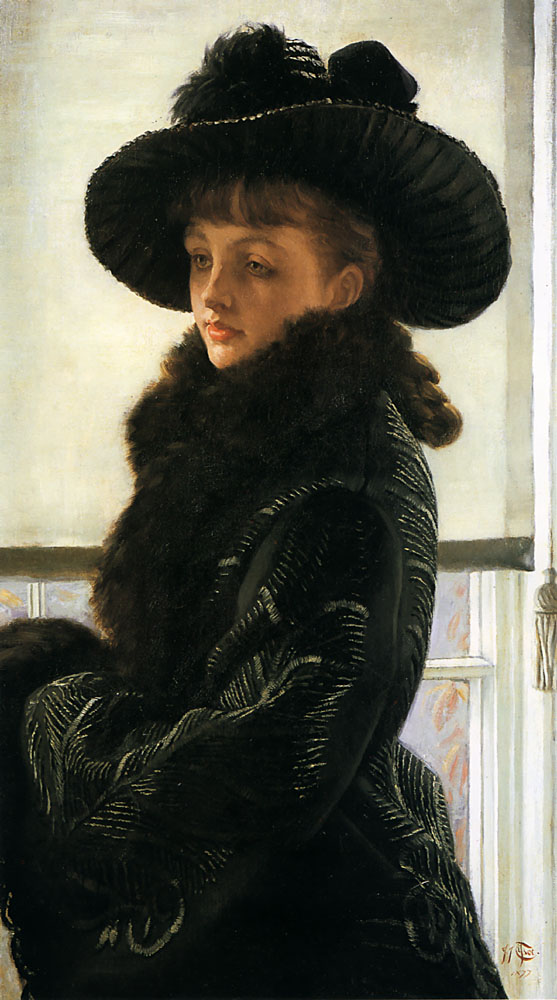
Mavourneen(Portrait of Kathleen Newton), 1877

The Gallery of H.M.S. 'Calcutta'(Portsmouth), c.1877
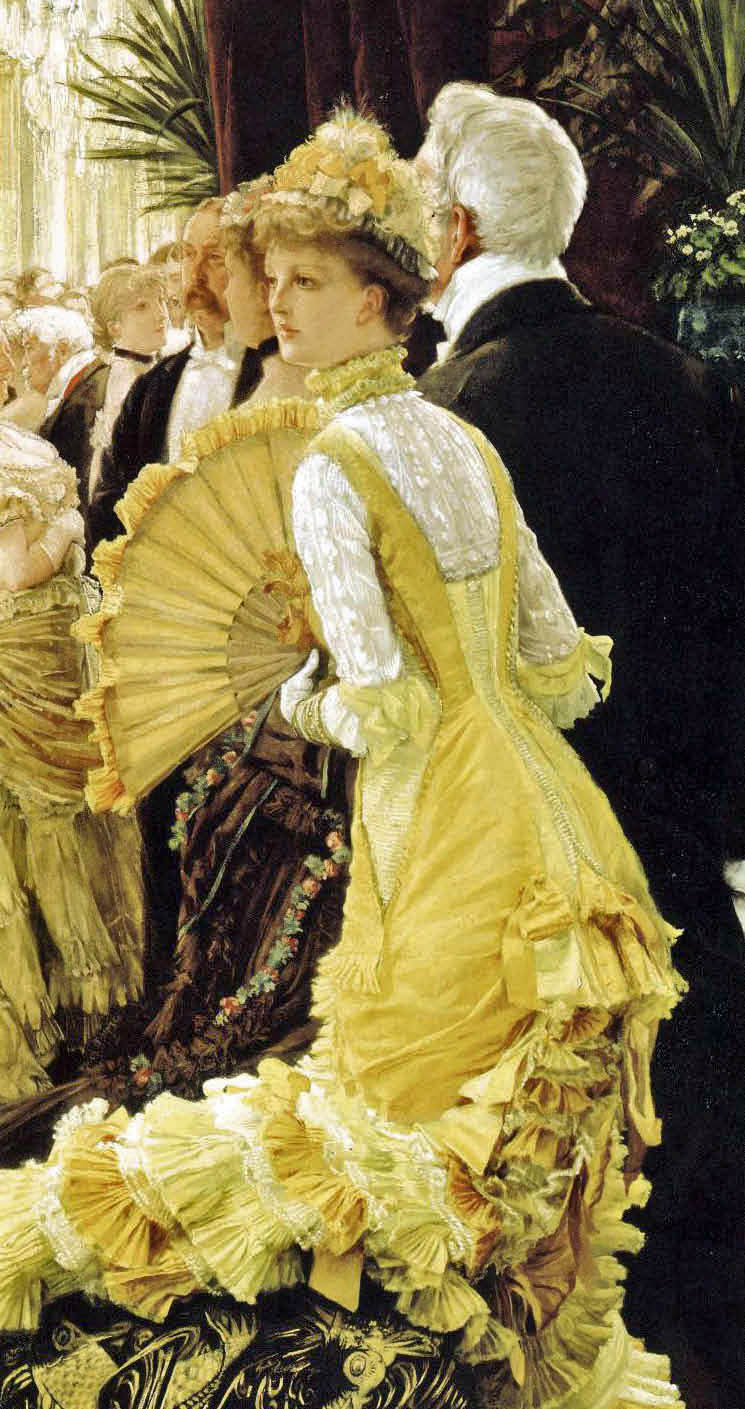
The Ball, 1878
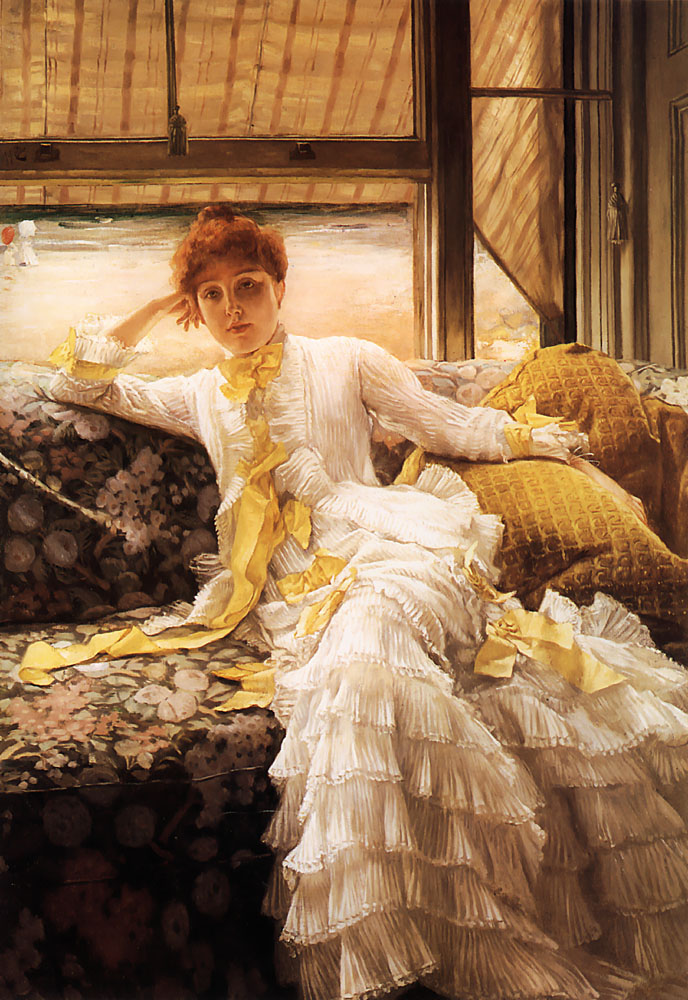
Seaside(Spring), c.1878
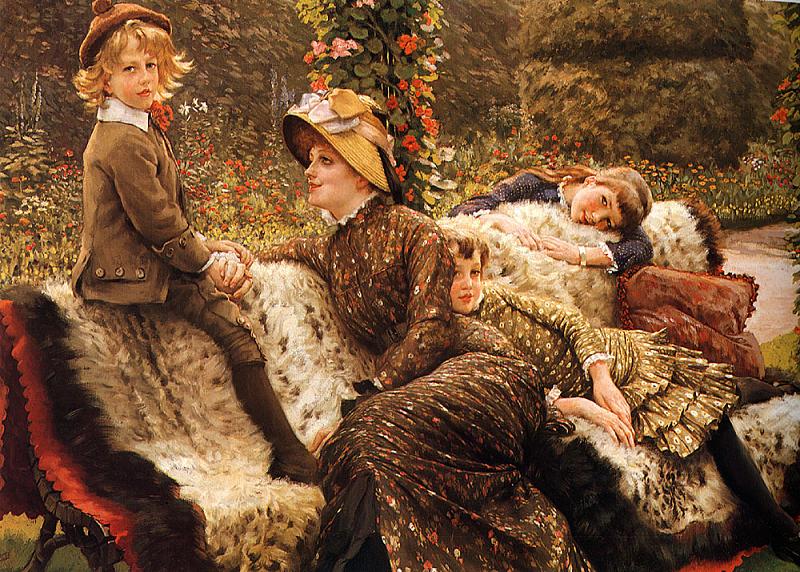
The Garden Bench, c.1882
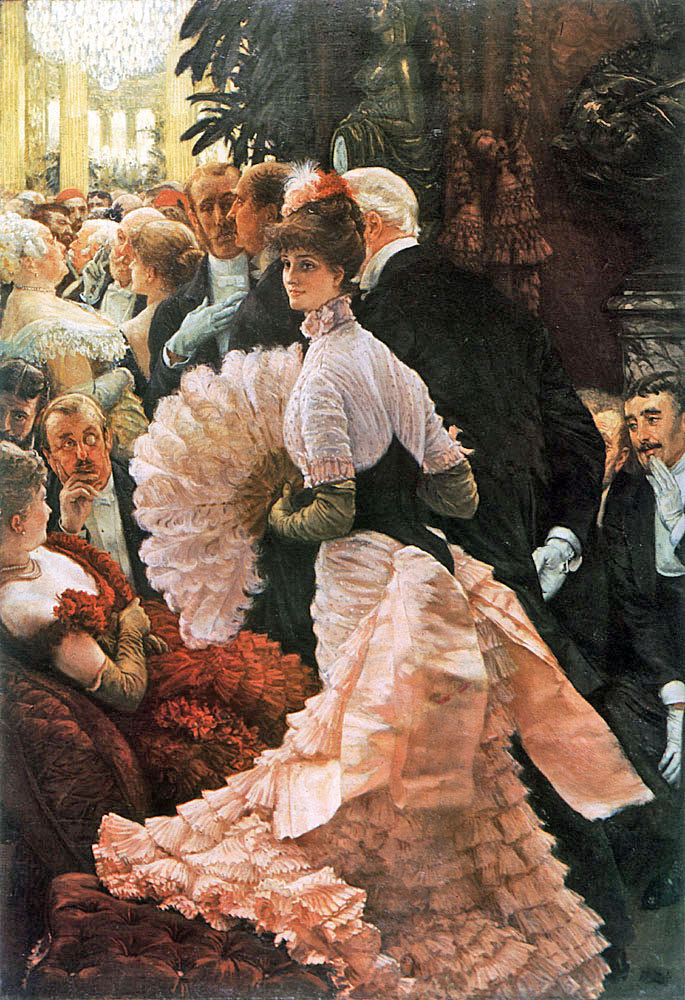
The Political Lady, 1883-1885
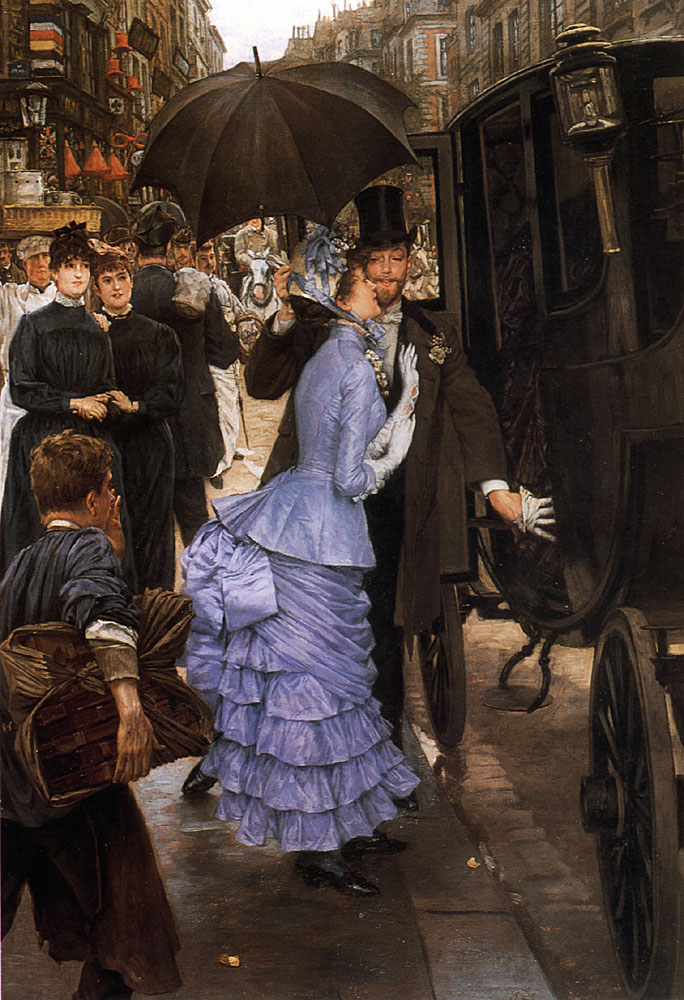
The Traveller(The Bridesmaid), 1883-1885
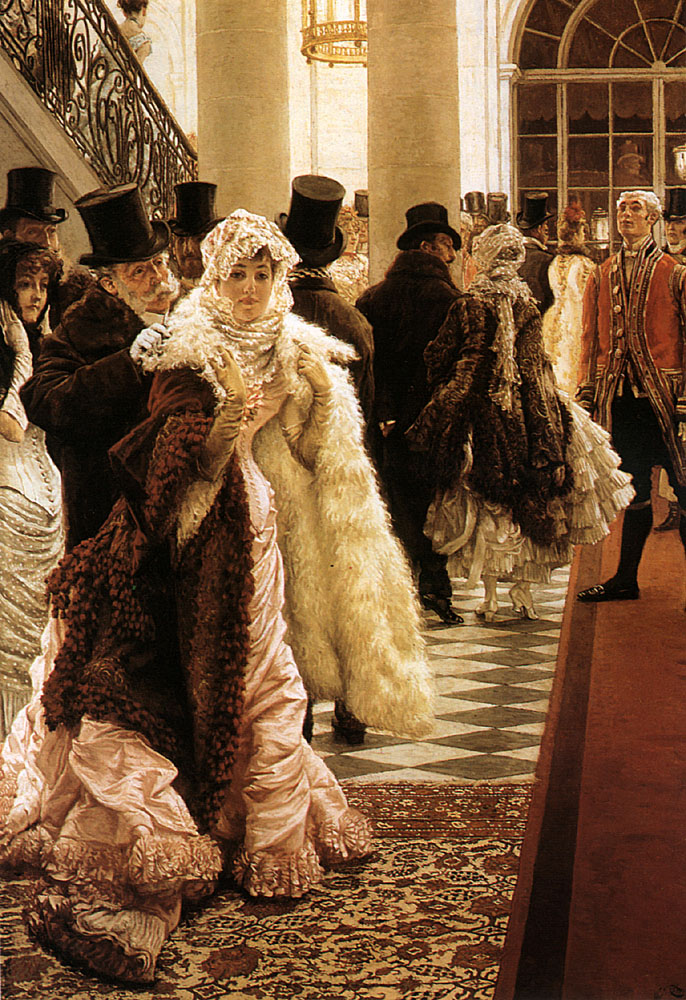
The Woman of Fashion, 1883-1885
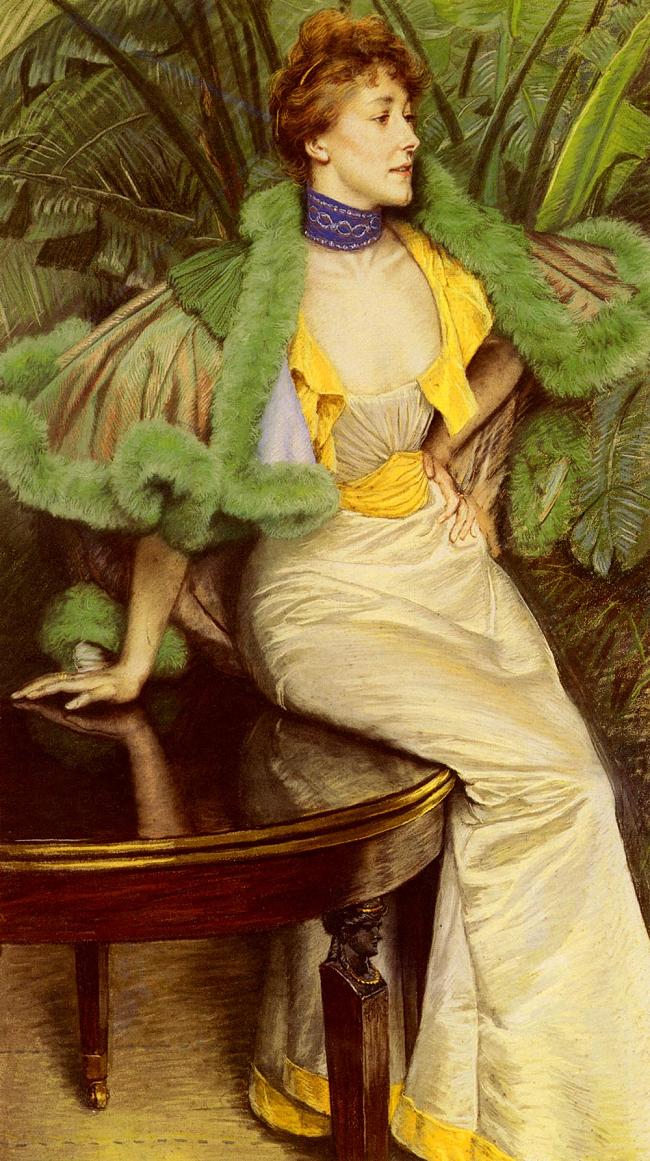
The Princesse De Broglie
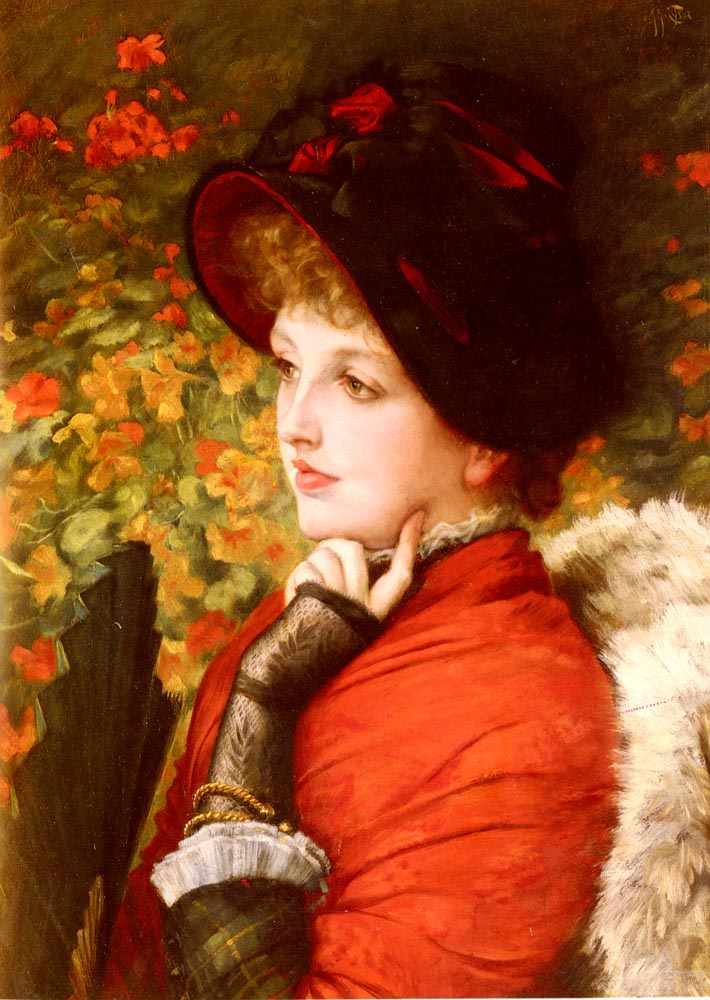
Type Of Beauty(Kathleen Newton)
★ James Tissot(1836-1902:French Painter) ★
Tissot was born at Nantes. He studied at the Ecole des Beaux Arts in Paris under Ingres,
Flandrin and Lamothe, and exhibited in the Paris Salon for the first time at the age of twenty-
three. In 1861 he showed The Meeting of Faust and Marguerite, which was purchased by
the state for the Luxembourg Gallery.
His first characteristic period made him a painter of the charms of women.
Demi-mondaine would be more accurate as a description of the series of studies which
he called La Femme a Paris.
He fought in the Franco-Prussian War, and, falling under suspicion as a Communist,
left Paris for London. Here he studied etching with Sir Seymour Haden, drew caricatures
for Vanity Fair, and painted portraits as well as genre subjects.
Sometime in the 1870s Tissot met a divorcee, Mrs. Kathleen Newton, who became his
companion and the model for many of his paintings.
Mrs. Newton moved into Tissot's household in 1876 and lived with him until her suicide in
the late stages of consumption in 1882 at the age of 28.
It was many years before he turned to the chief labor of his career - the production of a
series of 700 water-color drawings to illustrate the life of Christ and the Old Testament.
He disappeared from Paris, whither he had returned after the death of Kathleen Newton,
and went to Palestine. In 1896 the series of 350 drawings of incidents in the life of Christ
was exhibited in Paris, and the following year found them on show in London.
They were then published by the firm of Lemercier in Paris, who had paid him 1,100,000
francs for them. (Over 500 related drawings, watercolors and oils are now in the collection
of the Brooklyn Museum.)
